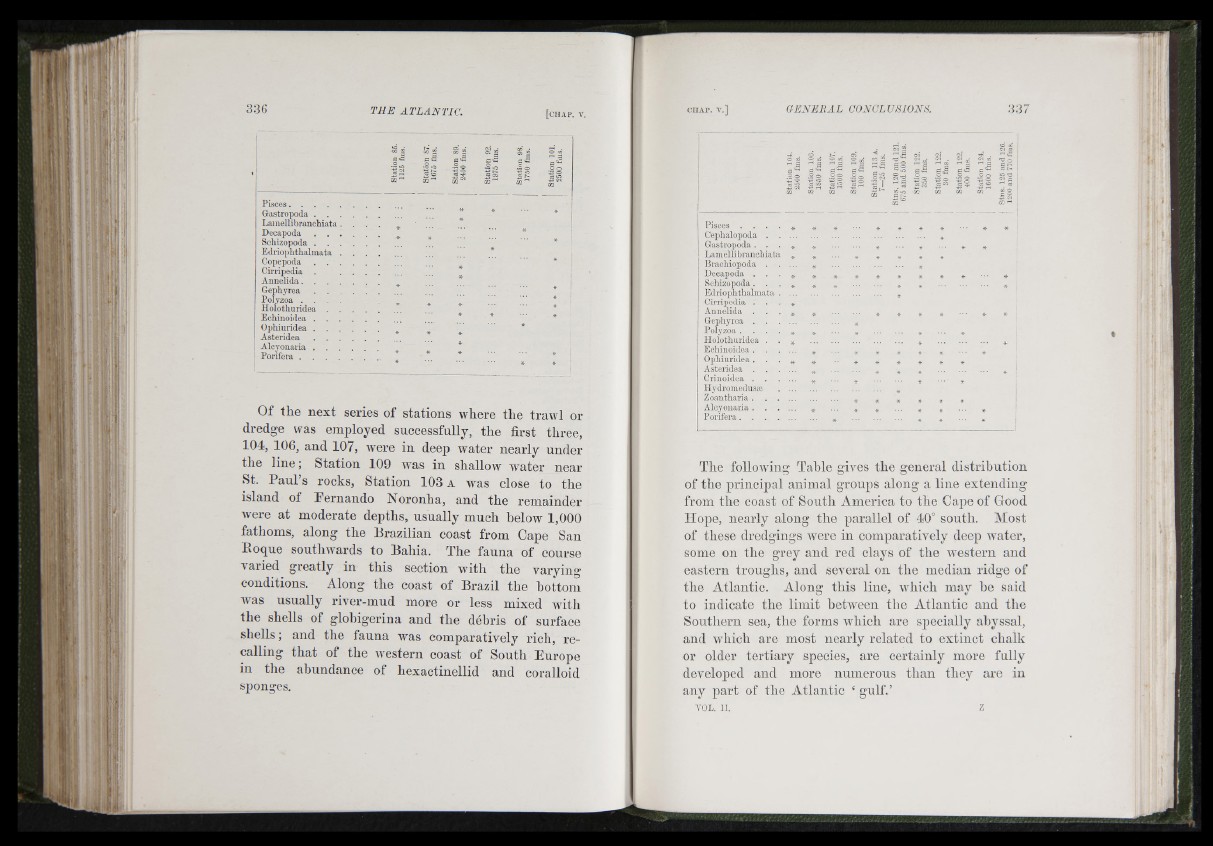
ì ;
i :
41 i
ill '
í
t i
*4»h’
s »
OR .«2 go S ^
0 0 Í2
G --S
.2,0
OQ ^
Ü
•2 o 5ie « os
OQ
•Is
OQ 03
Pisces......................
Gastropoda . . .
Lainellibranohiatu .
Decapoda . . .
Schizopoda . . .
Edriophthalmata .
Copepoda
Cirripedia
Annelida. . . .
Gephyrea
Polyzoa . . . .
Hoiothuridea .
Echinoidea . . .
Ophiuridea . . .
Asteridea . .
Alcyonaria . . .
Porifera . . . .
Of the next series of stations where the trawl or
dredge was employed successfally, the first three,
104, 106, and 107, were iu deep water nearly under
the line ; Station 109 rvas in shallow water near
St. Paul’s rocks. Station 103 a was close to the
island of Pernando Noronha, and the remainder
Avere at moderate depths, usually much below 1,000
fathoms, along the Brazilian coast from Cape San
Eoque southwards to Bahia. The fanna of course
varied greatly in this section with the varying
conditions. Along tbe coast of Brazil tbe bottom
AA'as usually riA'er-mud more or less mixed with
the shells of globigerina and tbe débris of surface
shells ; and the fauna was comparatively rich, recalling
that of tbe Avestern coast of Soutb Europe
in tbe abundance of bexactinellid and coralloid
sponges.
Za
rt o O IS
=> oo .q2_. mo .2 ç; >o q-r5t Cr-Ot
Ír-t! M
rt ri 00
G ^ aOrt oo U■+:Ì> 1—I cr. o
CO
Pisces . . . .
Cephalopoda .
Gastropoda , . .
Lamellibrauohiata
Drachio
poda
Decapo:
Schizo
Edriop
)oda .
hthalmata
Cirripedia . .
Annelida . .
Gepliyrea . .
Polyzoa .
Holothuridea ,
Echinoidea .
Ophiuridea. .
Asteridea . .
Crinoidea .
HydromeduScE
Zoantliaria .
Alcyonaria . .
Porifera. . ,
The folloAving Table gives tbe general distribution
of the principal animal groups along a line extending
from tbe coast of Soutli America to tbe Cape of Cood
Hope, nearly along the parallel of 40° south. Most
of tbese dredgings Avere in comparatively deep Avater,
some on tbe grey and red clays of tbe Avestern and
eastern troughs, and several on the median ridge of
the Atlantic. Along this line, Avhich may he said
to indicate the limit between the Atlantic and the
Southern sea, tho forms Avhich are specially abyssal,
and which are most nearly related to extinct chalk
or older tertiary species, are certainly more fully
developed and more numerous than they are in
any part of the Atlantic ‘ gulf-’
V O L . 11. Z